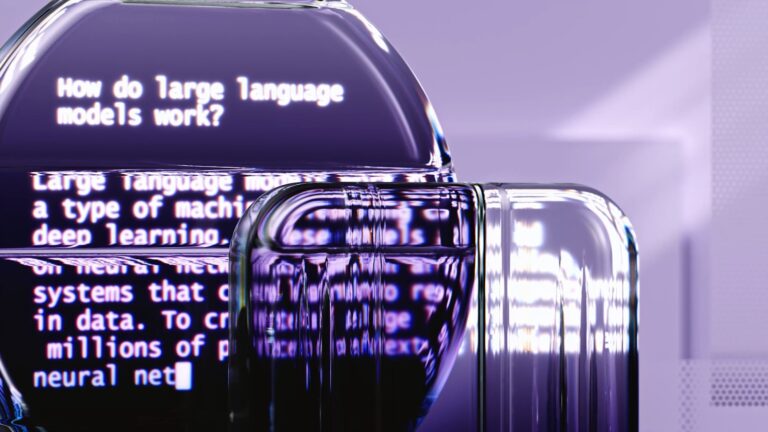In the world of artificial intelligence (AI) and machine learning (ML), Natural Language Processing (NLP) stands out as one of the most transformative technologies. It enables computers to understand, interpret, and generate human language, bridging the gap between human communication and machine processing. From voice assistants like Siri to chatbots handling customer service queries, NLP is all around us, driving innovation across industries.
But how do you actually “make” NLP? What are the components involved, and how can you build a system that processes and understands language like a human? Whether you’re an entrepreneur looking to integrate NLP into your product or a tech enthusiast eager to learn, this guide will walk you through the essentials of NLP and how to get started on your own NLP projects.
What is NLP? A Brief Overview
Natural Language Processing (NLP) is a subfield of AI and linguistics focused on the interaction between computers and human (natural) languages. The goal of NLP is to enable machines to read, decipher, understand, and generate human languages in a way that is valuable. This can range from understanding sentiment in text to translating languages or even generating human-like responses in real-time conversations.
Here’s a breakdown of some key aspects of NLP:
- Text Classification: Categorizing text into predefined groups (e.g., spam vs. non-spam emails).
- Sentiment Analysis: Determining the sentiment behind a piece of text (positive, negative, or neutral).
- Named Entity Recognition (NER): Identifying and categorizing entities in a text, such as names, dates, and locations.
- Machine Translation: Automatically translating text from one language to another.
- Speech Recognition: Converting spoken language into text.
- Text Generation: Producing new text based on input, such as chatbots generating responses.
How to Make NLP: A Step-by-Step Guide
Creating an NLP system requires understanding several core components and techniques. Let’s break it down into manageable steps.
1. Data Collection: The Foundation of NLP
Like any AI model, NLP systems depend on data. To train an NLP model, you need a significant amount of text data. The quality and diversity of the data will influence the performance of your model.
- Sources of Data: Web scraping, open datasets (like Common Crawl, Kaggle, or Google Books), proprietary databases, and social media content.
- Data Preprocessing: Raw text data is often noisy and unstructured. Preprocessing includes tasks like:
- Tokenization: Splitting text into smaller units, like words or phrases.
- Stop Word Removal: Removing common words that don’t add significant meaning (e.g., “the,” “and”).
- Lemmatization/Stemming: Reducing words to their base form (e.g., “running” to “run”).
2. Text Representation: Converting Words into Machine-Readable Format
Computers cannot understand words as we do, so text needs to be converted into numerical formats. The most common methods are:
- Bag of Words (BoW): Represents text as a collection of words without considering word order. It’s simple but often inefficient for complex tasks.
- TF-IDF (Term Frequency-Inverse Document Frequency): A weighted approach that accounts for the importance of each word in a document relative to the whole dataset.
- Word Embeddings: Techniques like Word2Vec or GloVe represent words in dense vectors, capturing the semantic meaning of words based on their context.
- Transformers (e.g., BERT, GPT): These advanced models understand the context of words by analyzing the surrounding words in a sentence, leading to much more nuanced understanding.
3. Model Selection: Choosing the Right Algorithm
The next step is selecting an appropriate model for your NLP task. Common algorithms for NLP tasks include:
- Naive Bayes: Often used for text classification and sentiment analysis.
- Recurrent Neural Networks (RNN): Useful for tasks involving sequences, like language translation or text generation.
- Transformers: State-of-the-art models like BERT and GPT that have revolutionized NLP due to their deep understanding of context and relationships in text.
Here’s a comparison table to help you choose the right algorithm for your task:
| Model | Best For | Strengths | Limitations |
|---|---|---|---|
| Naive Bayes | Text Classification, Sentiment Analysis | Simple, fast, works well for small datasets | Assumes independence between words |
| RNN (LSTM, GRU) | Sequence prediction, language modeling | Handles long-term dependencies well | Can be slow and computationally expensive |
| Transformers | All NLP tasks (translation, generation) | Context-aware, state-of-the-art performance | Resource-intensive, requires large datasets |
4. Training the Model: Teaching the Machine
Once you have your data and chosen a model, the next step is training the model. This involves feeding the model large amounts of labeled text data (in supervised learning) and adjusting the model parameters to minimize errors in predictions.
- Overfitting: Be cautious of overfitting, where your model performs well on the training data but fails on new, unseen data. Techniques like cross-validation can help mitigate this.
- Fine-tuning: For pre-trained models like BERT or GPT, fine-tuning them on your specific data can save time and resources.
5. Evaluation: Measuring Model Performance
To determine how well your model performs, use various evaluation metrics, depending on the task at hand. Common metrics for NLP include:
- Accuracy: The proportion of correct predictions.
- Precision, Recall, and F1 Score: Particularly useful in imbalanced datasets or tasks like classification and entity recognition.
- BLEU Score: Used for evaluating machine translation output.
6. Deployment: Making Your NLP Model Useful
After training and evaluation, the final step is deploying the model. This might involve:
- Building APIs: Expose your NLP model via an API to integrate with web or mobile applications.
- Integration: Use frameworks like Flask, FastAPI, or Django to connect your model to real-world applications like chatbots or customer service platforms.
Real-World Applications of NLP
NLP is already transforming many industries. Here are some examples:
- Healthcare: NLP can extract insights from medical records, enabling more accurate diagnoses and personalized treatment plans.
- Customer Service: Virtual assistants like chatbots can handle customer inquiries in real-time, reducing the need for human intervention.
- Finance: NLP is used for analyzing market sentiment from news articles, financial reports, and social media to predict stock movements.
To learn more about how AI can impact investment decisions, check out this guide on the best AI stocks to invest in. For those interested in monetizing AI automation, even without technical skills, we also have an article on how to make money with AI automation.
How AI and NLP Are Shaping Careers
While NLP offers massive potential for businesses, many people are concerned about the impact of AI on jobs. Will NLP and AI make certain careers obsolete? It’s a valid concern. However, there are several careers that remain safe, and others that are likely to thrive as AI advances. You can learn more about this in our post on AI vs Human Jobs.
Key Takeaways
- NLP is a powerful tool that can revolutionize the way we interact with machines and data.
- Data preprocessing and choosing the right model are crucial for building effective NLP systems.
- Training and evaluation of the model are necessary steps to ensure your system performs well in real-world applications.
- Applications of NLP are diverse and impactful across industries like healthcare, finance, and customer service.
Conclusion: Unlocking the Future with NLP
Natural Language Processing is more than just a buzzword—it’s a transformative technology with the potential to revolutionize how businesses operate, how we interact with machines, and even how we live our daily lives. By following the steps outlined in this guide, you can start building your own NLP models, leveraging them for everything from chatbots to data analysis tools.
As you explore the possibilities of NLP, keep in mind that it’s a rapidly evolving field. Stay curious, experiment with new models, and continue learning to keep pace with the latest advancements in AI.
If you’re ready to dive deeper into the world of AI, start by exploring more about how AI can be used to generate income, or consider looking into the best AI stocks to invest in as part of your financial strategy. Keep pushing forward—there’s a world of opportunity waiting for you in NLP.
Explore more, learn more, and take action today!



